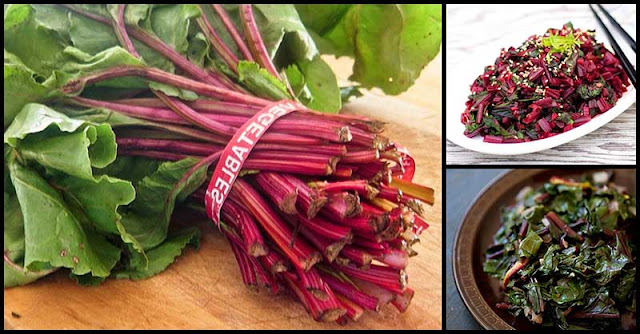Beet greens are those luscious leafy top of the beetroot. They are completely edible and are filled with superhero nutrients that make them a great addition to our meal. These greens can supply our body with good amounts of vitamins, minerals, antioxidants, and other beneficial nutrients. At present, they are used in various dishes or added smoothie or salad.
Below are some of the benefits that we can obtain from eating beet greens:
May Help Improve Eye Health
Beet greens are loaded with Vitamin A (Beta-Carotene) and Lutein which are both beneficial for eye health.
A study conducted by the Age-Related Eye Disease Study Research Group, results showed that people (over the age of 50) who took a supplement that includes beta-carotene had experienced a reduced risk of developing advanced macular degeneration. Moreover, Lutein (a carotenoid with anti-inflammatory properties) in beet greens can also help prevent age-related macular disease.
May Help Improve Digestive Health
Beet greens are rich in fiber, both soluble and insoluble. Consumption of it can help improve digestion and chronic constipation as well as encourage healthy bacterial growth throughout the digestive tract. It stimulates good gut bacteria; a happy gut is vital for health!
May Boost Immunity
Beet greens are incredibly rich in vitamin C which is known as nature’s immunity booster. Adding them to our diet can help our immune system, especially during the cold and flu season.
May Help Maintain A Healthy Weight
Beet greens are great for maintaining a healthy weight as they contain zero saturated fat and cholesterol. Aside from this, they are also rich in Vitamin K, copper, manganese, iron, and calcium.
May Help Strengthen Bones
Beet greens are perfect for strengthening the bones and lowering our risk of osteoporosis. It contains high amounts of calcium, vitamin D, and vitamin K which are all important for keeping the bones strong.
Dr. Sherry Ross, a women’s health expert at Providence Saint John’s Health Center in Santa Monica, California, says:
“Vitamin K works with vitamin D to ensure that calcium finds its way to the bones to help them develop properly.”
How to Prepare Beet Greens
Check the leaves carefully to be sure that there are no insects and wash in fresh cold water thoroughly. Lift the leaves from the bowl, pour off the water, and wash again. Do not pour the water off leaving the greens in the bowl – the sand will remain in the pan and is likely to mix with the greens again. Repeat as many times as needed to remove all grit from the stalks.
If you use the stalks, keep them separately. Cut the leaves and stalks into rough 1-, or 2-inch pieces.
- Add fresh, raw beet leaves to the mixed salad with other greens. Pat them dry after washing, or spin in the salad spinner, and cut away the stems.
- Juice beets along with fresh greens, or add beet leaves to green smoothies.
- Boil or steam beet greens for a simple low-calorie side dish.
- Sautée beet greens like spinach with this basic recipe below:
Heat 2 tablespoons butter or vegetable oil in a large skillet.
Add 4 cups chopped greens including stems; 1 tablespoon grated fresh horseradish, 1 finely chopped shallot or small onion, ½ tablespoon Dijon mustard, and a pinch of salt.
Cook, stirring until the greens are wilted, about 5 minutes.
Add ¼-cup water, cover and simmer until the greens are tender, 10 to 15 minutes. Uncover and cook until all liquid evaporated. Remove from heat and add ½ cup sour cream if desired.









